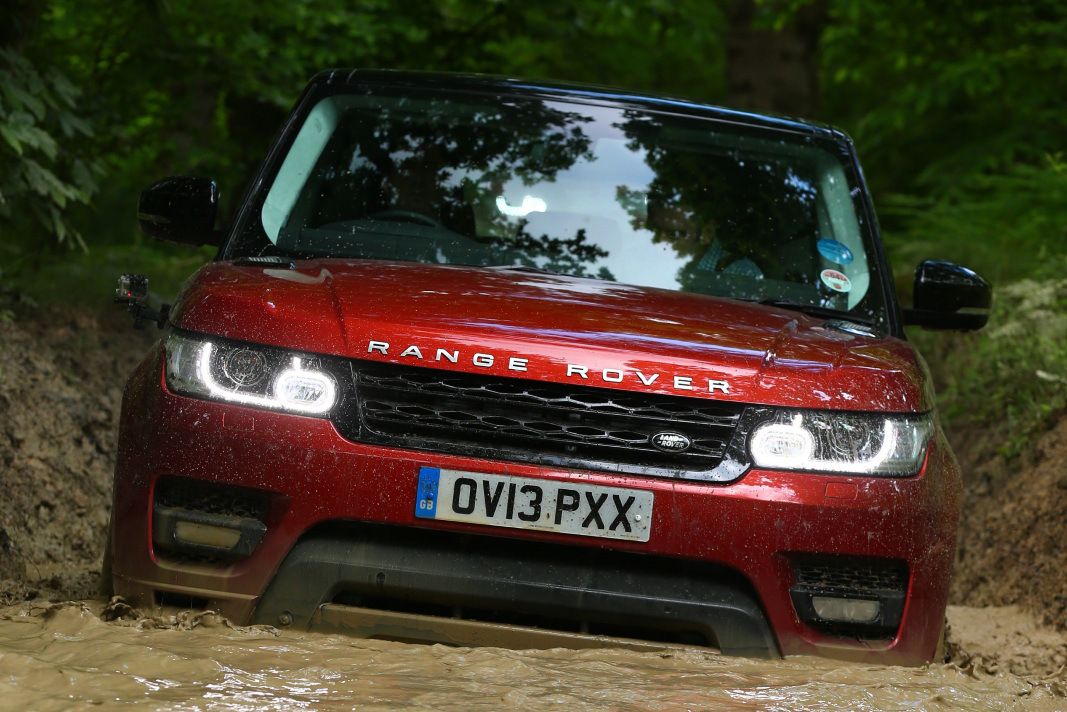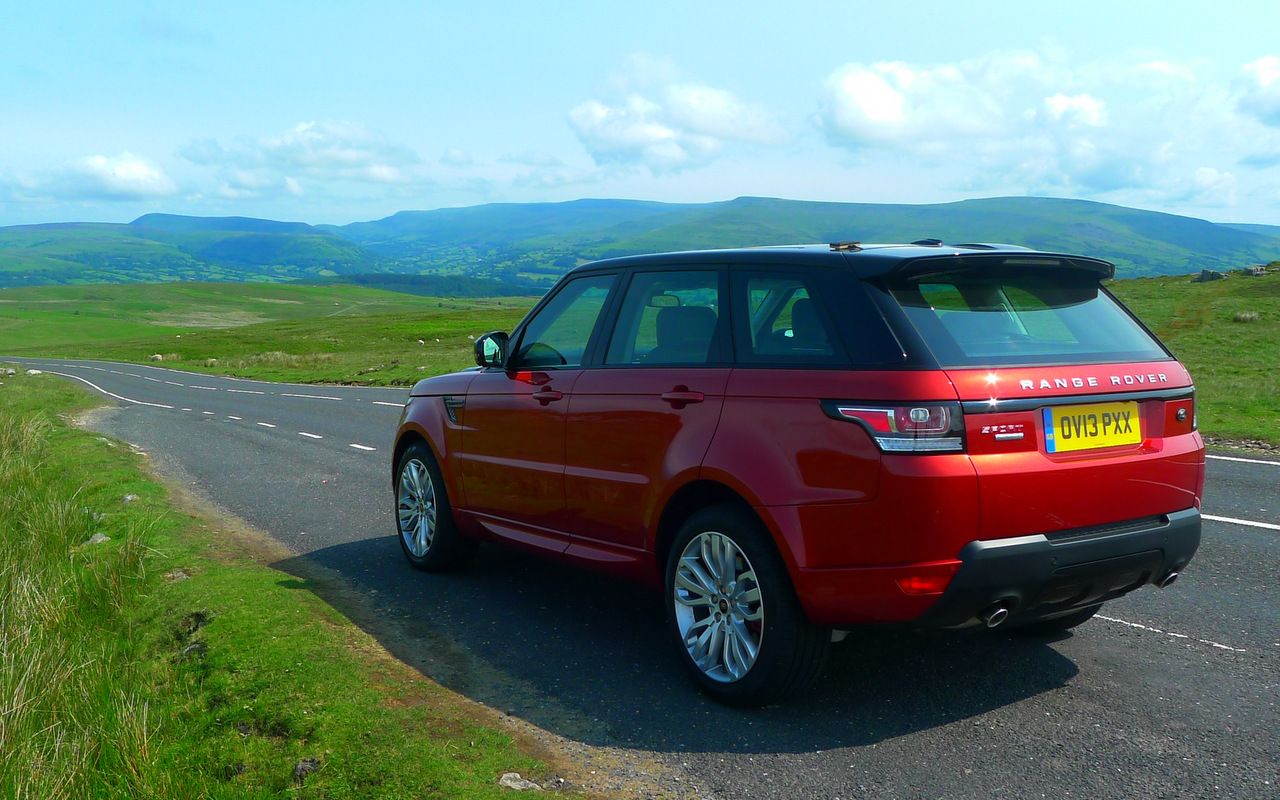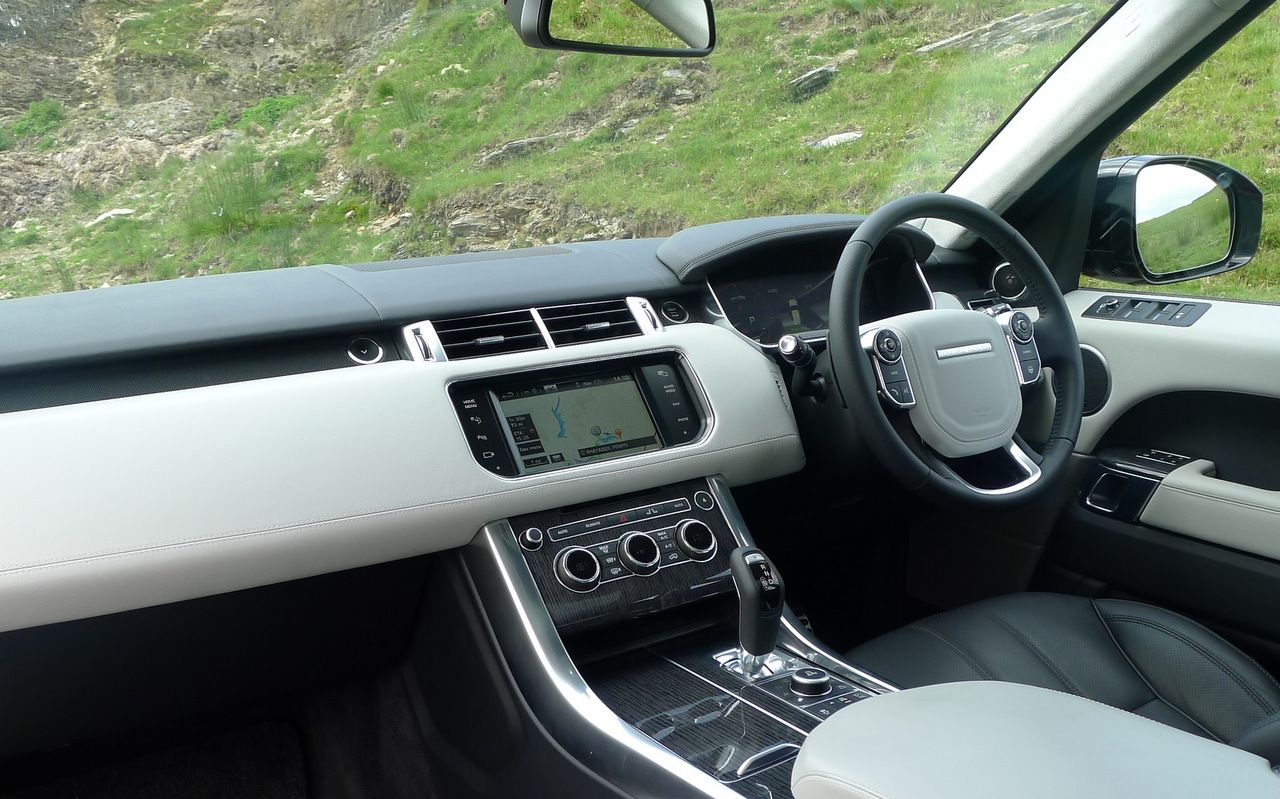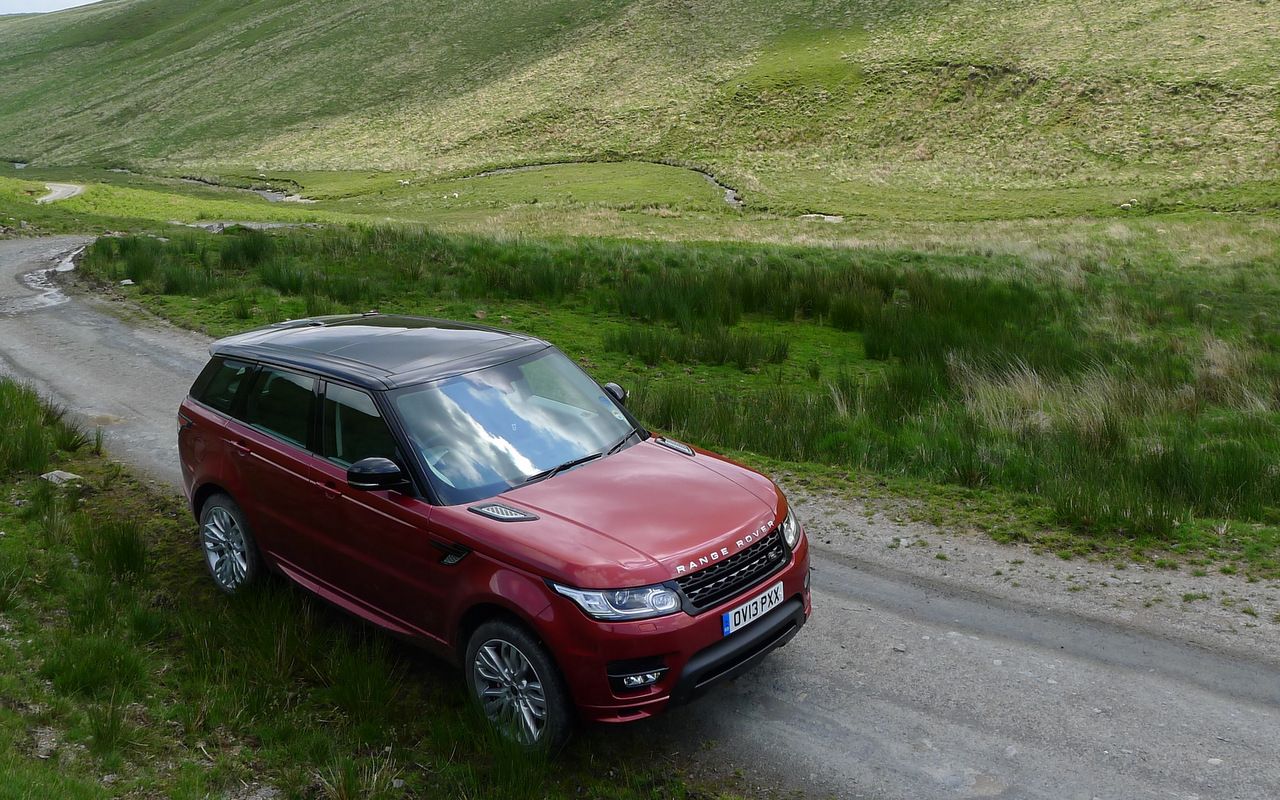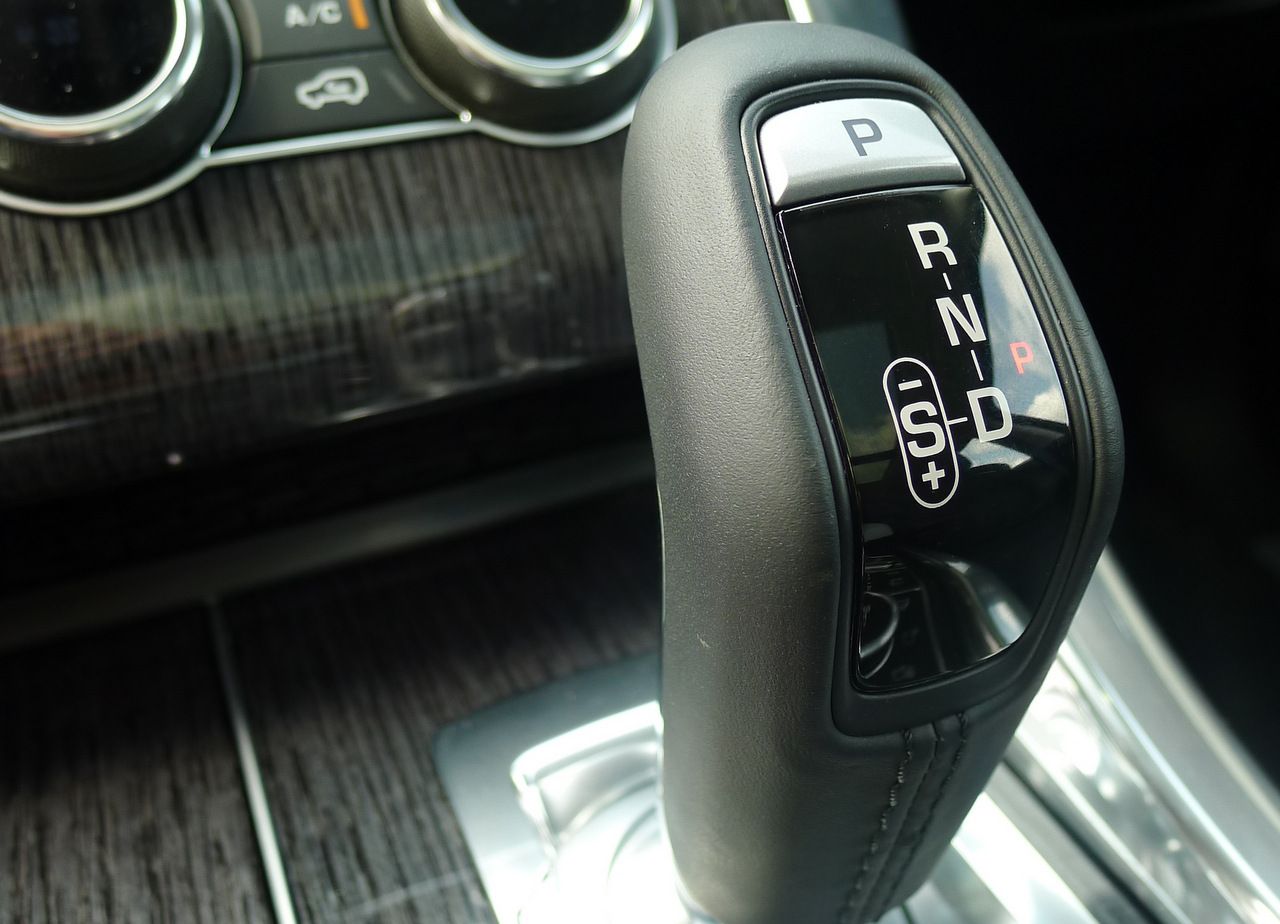It's not easy for the Range Rover Sport. It has to be almost as proficient off-road as the Discovery, nearly as old money as the Range Rover and better to drive than both. It has to be versatile like nothing else.
Our quick take
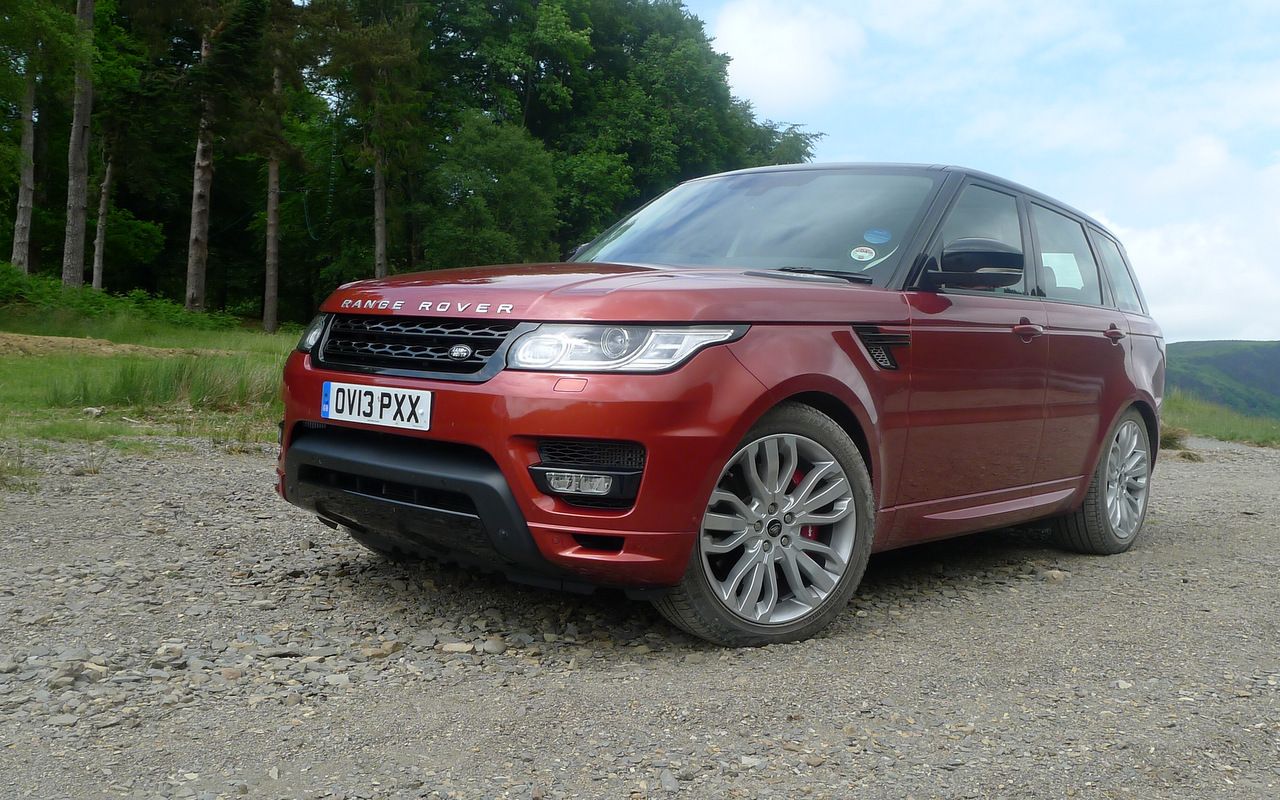
| FOR | AGAINST |
|---|---|
|
|
|
While the original Sport never had the elegance of a proper Range Rover - quite the opposite - this one does. Almost. The new Sport is physically bigger than the car it replaces but a higher belt line, softened edges and shorter overhangs give it stance to match the old car's undeniable presence.
Wraparound front and rear-lights are a current trend in the car world and go well with the Sport's dapper new suit. The pinched rear not so much, but overall it's as if all the best bits from the Evoque and the new Range Rover have been cobbled together.
Climb aboard and you'd be forgiven for thinking that Land Rover had bolted the Range Rover's interior in, too. This is the way to travel. Warm leather and wood is contrasted by cold metal - traditionally luxurious materials that are further set-off by the Sport's ultramodern tandem TFT LCD displays. Interiors have been a strong point for Range Rover and the simple architecture suits the Sport's imperious approach to personal transport.
Three engines are available in the UK and the easiest route into a Sport is the 3.0 TDV6, which starts at £51,550 and becomes available in January. Next up is the 288bhp 3.0 SDV6, prices for which begin at £59,995 for the HSE and end at £74,9995 for the Autobiography Dynamic model. The range-topping 5.0 V8 Supercharged petrol is a considerable hike up again, from £81,500, and Jaguar say most will end up in Middle and Far Eastern markets.
An all-aluminium body means the new Sport is lighter and stiffer than the car it replaces, and it shows. The new Sport covers ground like an overgrown Golf GTI. Even our car - the likely-best-selling 288bhp 3.0 SDV6 – ducked and dived through adverse cambers and narrow lanes, only gently understeering when aggressively provoked. Impressive already, but dynamic mode improves everything. Once activated, via a central dial, there's virtually no body roll for a car of this size, while the steering quickens and throttle response is sharper. The dampers also react faster and torque vectoring brakes the inside wheels to drag the car through corners with freakish pace.
The steering wheel-mounted paddles are not especially tactile but shifts are crisp. Short shifting through the Sport's 8-speed gearbox, riding a surprisingly sonorous wave of torque, results in eerily serene but expeditious acceleration. The rest of the time the diesel engine is so refined you'll forget it's there.
Our Sport was also happy to quietly amble through Welsh villages in seventh gear at 40mph, revealing another aspect of the car's overall versatility. However, it's the chassis dynamics that Land Rover has really improved over the old and slightly wallowy Sport.
Given their integral association with the British Army, it wasn't surprising that Land Rover managed to engineer some time for us in the Sennybridge Training Area in Wales. Unaccompanied, we were let loose on Epynt's gravel tracks, gratuitously hammering the Sport through bend after bend. Apart from Land Rover's impressive disregard for the wellbeing of its brand new car, the Sport again stood out as being absurdly easy to drive fast over an uneven surface. Even with such a heavy car moving around on top of loose gravel it was impossible to not feel confident. We should probably say that the ride was impressively composed throughout, but we can't objectively remember, such was the level of hooning.
This leads to the question: how much abuse can one car take? Or rather: how many contrasting types of beating can one car take while leaving its occupants in blissful luxury?
In this case, many. The next stop, Land Rover's off-road centre at Eastnor Castle, must be something of an abattoir for vehicles less capable than the Sport, comprising mainly of impossibly steep descents caked in knee-deep mud, all set within an endless slalom of stubborn-looking trees. There are also horribly rutted high-speed meadow tracks, boulder fields and rivers. It's not meant to be a nice place for cars.
Setting the Sport up for this kind of activity is deceptively easy. Select neutral, press the "low-ratio gearbox" button on the centre console and that's it. All that's left for the driver to do is settle in to the Sport's heavily bolstered 14-way, masseuse seats and point 2,115kg of Gaydon's finest in the right direction.
Don't worry if you forget to select the right settings. In auto mode, the Sport continually decides which of its five modes - general, grass/gravel/snow, mud/ruts, sand and rock crawl - it should be using, adjusting the chassis, suspension and power delivery accordingly. After flattering us on the open road the Sport was now enjoying a bout of showmanship.
The result was steady but utterly unflappable progress over impressively hostile terrain, due in part to the Sport's class-leading wheel articulation of 546mm - more than 10 per cent greater than the closest rival (VW's Toureg in this case). The Sport's abilities were never exceeded, of course - not on Land Rover's own custom-built turf - but it makes you wonder where the limit is. And whether should you ever get near it.
Of course, what's causing most Chelsea residents' sleepless nights is the Sport's wading depth. They needn't worry. At 850mm it's just 50mm short of the full-bore Range Rover's aquatic prowess and the new car also features Wade Sensing, where cameras in the wing mirrors monitor water level and relay it via the Sport's central TFT screen.
Needless to say, the Sport splashed down the river at Eastnor as if it were someone's gravel driveway.
The absurd thing is that the car we used at Eastnor was exactly the same one that had used torque vectoring to fire us out of fast corners in the Brecon Beacons and viciously attacked a bona fide rally stage with aplomb just hours before. That means the same all-weather tires, the same beautiful 21-inch wheels, the same adaptive chassis and, for better or for worse, the same driver. Land Rover's engineers are the first to praise the Porsche Cayenne's off-road ability and the über-SUV's tarmac-rippling credentials are class leading, but this kind of versatility is beyond even the mighty German. After 250 miles of abuse the SDV6 Sport returned 27.4mpg. That's staggering, remembering that very few Sport's will ever see that kind of workout. Stop/start is standard across the range.
The original Range Rover Sport came with two items of baggage. First, everybody had one. Second, heavy-handed styling made it look dumpy next to a full-fat Range Rover. While popularity is hardly a crime, Land Rover has given the new Sport elegance - it now embodies "grace, space and pace" more than anything in the Jaguar lineup - and the result is pretty much flawless. Genuinely.
Land Rover did well with the original Range Rover Sport, but it deserves to shift the new car in even greater volumes. We can't remember driving a car with such breath of ability and ease of use.
The TDV6 may be our pick of the range, but we did spend a morning with the top-spec 5.0-litre V8 model. We used its 503bhp to hit 146mph and complete a 0-100-0mph run in less than 16 seconds. To put that into perspective, the McLaren F1 takes around 11.5 seconds. A tuned exhaust system, partially piped into the cabin, makes for a brilliant juxtaposition of 4x4 setting/supercar acoustics when the throttle is wide open and the way it accumulates speed - and the feeling of massive momentum - is frightening. Economy? 11.9mpg. Verdict: Insane.

